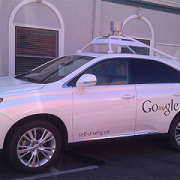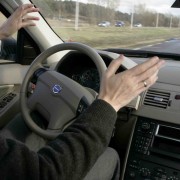News Roundup: Volkswagen Shows Off Sedric the Level-5 Autonomous Car in China, Major Players Weigh In on California’s Proposed Driverless Testing Policies, and More
A look at some of the biggest news stories to come out of the driverless and connected-car world this past week:
Major players weigh in on California’s proposed self-driving testing policies
Representatives from major players in the autonomous drive game, such as Apple, Uber, Tesla Motors and Ford, have been sending comments to California officials on what changes they would like to see made in the Golden State’s proposed policies for testing self-driving vehicles. In particular, Apple wants to change the way companies report “disengagements,” which we assume refers to accidents or collisions. Tesla wrote that they disapprove of the idea of barring testing of vehicles that weigh more than 10,000 pounds. Uber said it should be allowed for people to pay to ride in an autonomous vehicle with a driver behind the wheel in order to provide the company with honest feedback. Tesla also warned that restrictive policies would encourage developers to leave the state. Read more from Business Insider.
What to do with the ‘ocean of data’ connected and driverless cars will create each day?
Barclays analyst Brian Johnson said recently that as more and more cars are outfitted with sensors, cameras and LiDAR, the more data they will begin to generate. In fact, a single autonomous car will be capable of generating as much as 100 gigabytes of data per second. “Assuming the entire U.S. fleet of vehicles - 260 million vehicles - has a similar data generation, it would create an ocean of data. To put it in context, one hour’s worth of raw data across the entire U.S. fleet would be around 5,800 exabytes in size,” Johnson said. One exabyte is equivalent to one million terrabytes. That presents a wealth of problems when it comes to the storage, management and analysis of that much data. Many big companies like Tesla, Delphi and Intel have ideas about how to tackle this problem. One idea is “edge analytics,” where information is analyzed close to the sensor itself rather than being sent elsewhere through the cloud. Read more from CNBC.
Volkswagen wows with ‘Sedric’ Level 5 autonomous concept car in Shanghai
We first saw “Sedric” the Level-5 autonomous car in March, when Volkswagen showed off renderings of the concept car. Now, Volkswagen is showing off the real thing. The company recently took Sedric to China to show it off at the Auto Shanghai 2017 show. The car is capable of full Level-5 self-driving, and in fact executives said all a passenger has to do it climb in, press a single button to start the car, and then control it throughout the rest of the trip via voice commands. The car has no brakes, controls or pedals. In fact, the car features no “cockpit” at all. See more from Automotive Tires and Parts.
Photo: Interior of Volkswagen’s ‘Sedric’ car / Credit: Volkswagen


